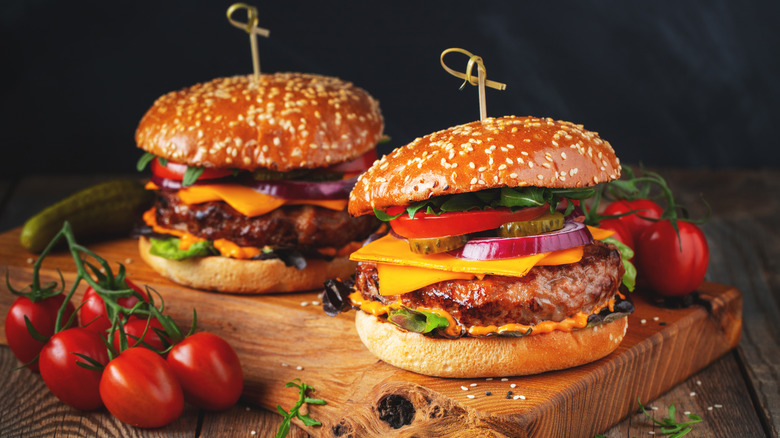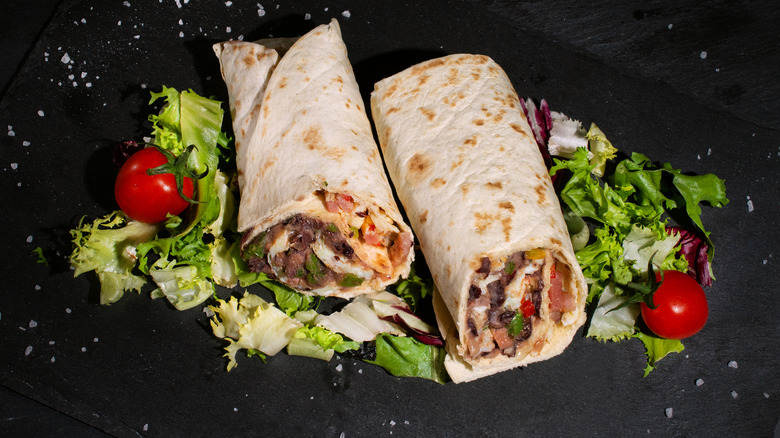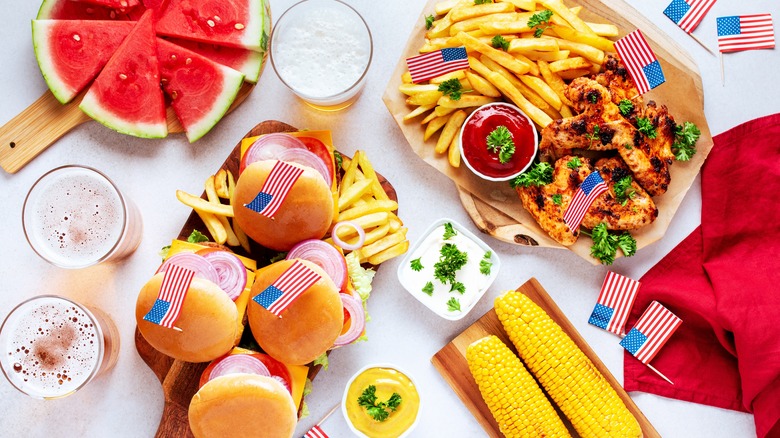Why It's So Hard To Define Exactly What 'American' Food Is
It can be intriguing (and amusing) to know what non-Americans assume is American food versus what Americans believe is American food. A scan of "American recipes" on the U.K.'s BBC Good Food, for example, shows a list of corndogs and variations of BBQ chicken. Plausible, but noticeably different from the U.S.-based Los Angeles Times' roundup of Super Bowl snacks which features fried onion-chili crisp dip and spicy smashed avocado. It's obvious that what the rest of the world thinks is American food is somewhere between the "Mad Men" era of glazed ham and ice cream sundaes, "Modern Family"'s pumpkin cheese ball with crudités, and "Bob's Burgers"' Bruschetta-Bout-It Burger (and yes, pop culture heavily influences how people describe the cuisine of a country and community).
Still, trying to define American food is like trying to pin jello to the wall. It's a slippery and messy task but if we really break it down, it is a function of three things: Who is cooking it? What are they cooking? And what are they calling it?
American food is constantly evolving
There is no real answer to the initial question ("who is cooking it?") because the American demographic is constantly changing. For example, in 1980, Latino or Hispanic people made up 6.5% of the population while Asian Americans made up 1.8%. In 2021, as noted by the U.S. Census Bureau, this changed to 18.9% and 6.1% respectively. With these shifts come readily available "hyphenated" cuisines like Tex-Mex dishes and American-Chinese food chains like Panda Express.
Even though we have data points for the first question, there is no way to predict what chefs and food personalities want to cook or promote. As Bon Appétit writes, there is an old trope that an Asian chef is expected to only cook Asian food. This can be limiting because white chefs can differentiate themselves using "exotic" ingredients but chefs of color are confined and type-cast based on their background. Some choose to push back on the expectation of "authentic" food and design menus based on their experience and readily available ingredients. This is probably why there are now Indian-Mexican burritos in Los Angeles, or why the New York Times has a recipe for a grilled cheese topped with the garlicky Middle Eastern condiment toum.
Just don't call it fusion food
Finally, the way different communities and chefs choose to represent their food is also constantly evolving. In the past, people might have referred to any mash-up of two different cuisines as fusion food. But according to Los Angeles Times critic Bill Addison, this flattens difference, nuance, and history.
These days, stateside chefs and recipe testers define their food (and by extension, their version of American food) however they want. When Eric Kim launched his cookbook, "Korean American," he received some criticism from Korean readers who said his recipes weren't "authentic" enough. In response, he told Sharp Magazine that his work and recipes come from a sense of ownership of this third identity, Korean-American. And that includes recommending watermelon salsa for a dinner party, which he dresses like Korean muchim, a spicy cucumber salad.
If we want a start on how to define American food, we should look at people who cook food that is familiar yet innovative. Chef Kwame Onwuachi's restaurant Tatiana in Manhattan is a good example of this, where ingredients like mangos, carrots, egusi seeds, and pimento all feature on the menu. As he told Forbes, "I'm Nigerian. I'm American. I grew up on Creole and Jamaican food. I want to cook whatever that is."


